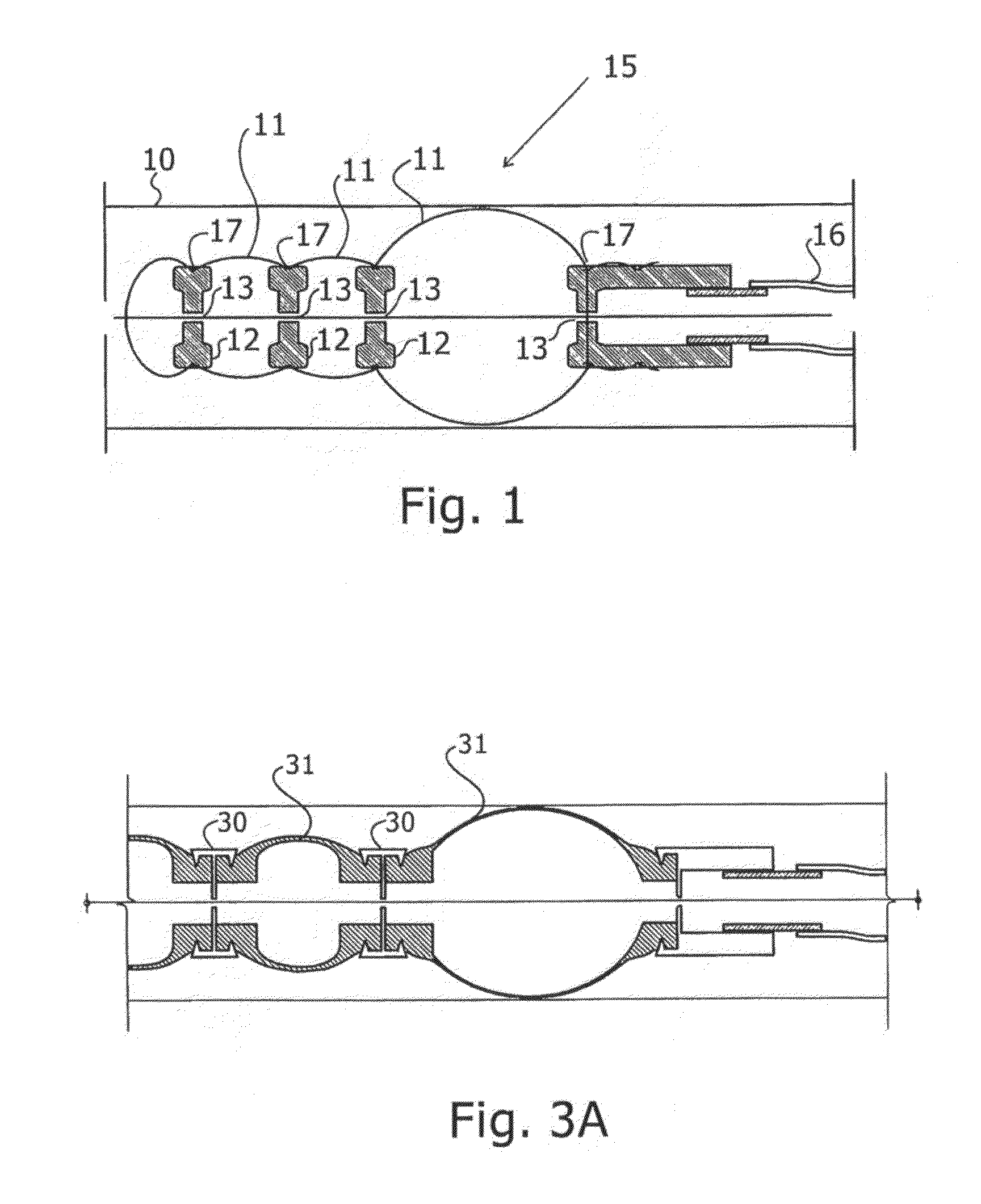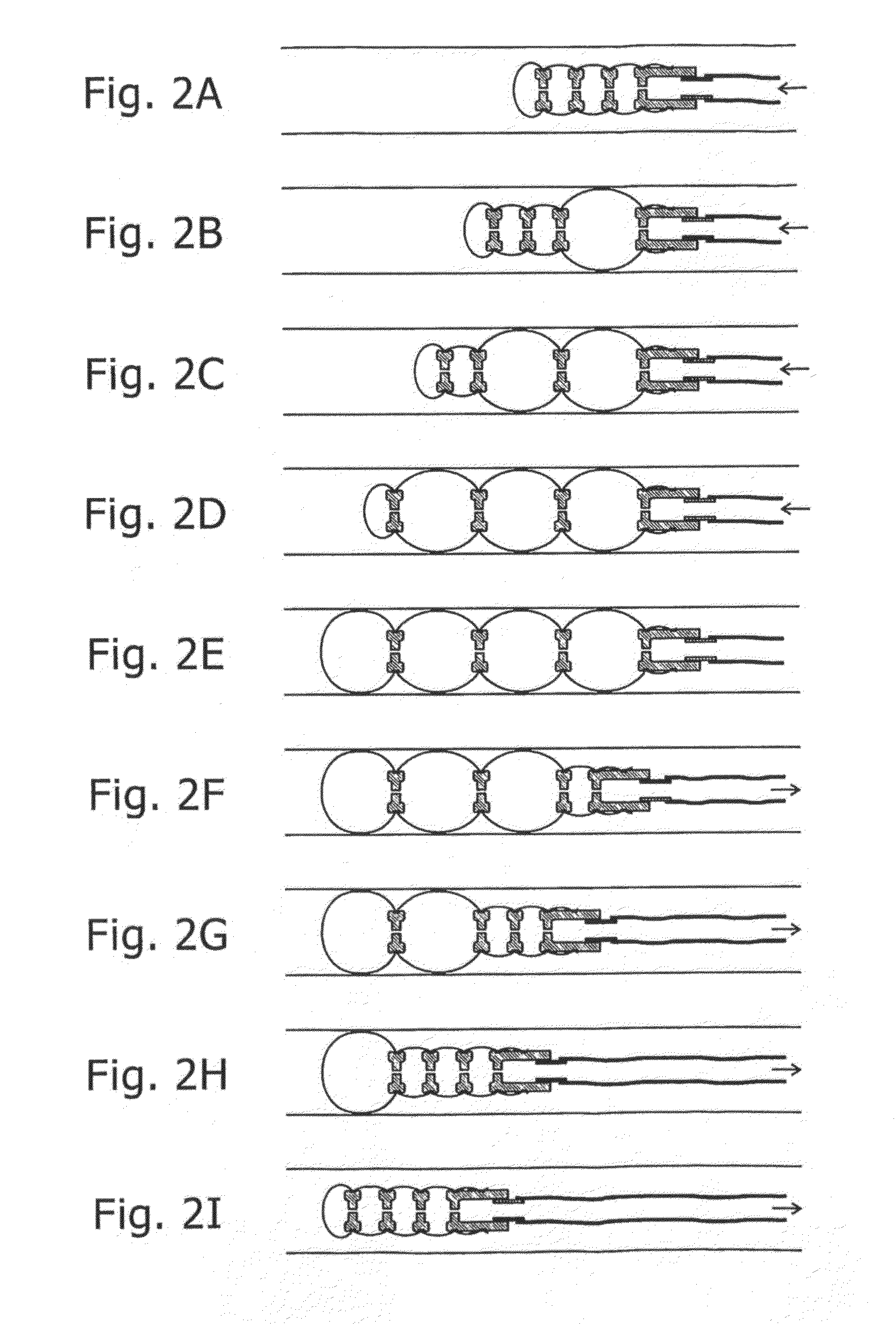Tip propelled device for motion through a passage
a technology of propulsion device and passageway, which is applied in the field of inflatable devices capable of self-propelled motion through tubes, can solve the problems of affecting the physical deployment of the device within the passageway, the inability to push the active head, and the possible injury of the inner tissue wall of the lumen, so as to achieve no friction or damage to the passageway being traversed, and the control system is simple and easy to operate. the effect of flexible and resilient material
- Summary
- Abstract
- Description
- Claims
- Application Information
AI Technical Summary
Benefits of technology
Problems solved by technology
Method used
Image
Examples
Embodiment Construction
[0056]Reference is now made to FIG. 1, which illustrates schematically a tip-propelled catheter device 15 for traveling down a lumen 10, constructed and operative according to a first preferred embodiment of the present invention. The device preferably comprises a number of balloons 11 connected to each other by separators 12 with one or more small openings, preferably in the form of orifices 13 formed therein, such that all the balloons comprise a single volume. For ease of construction, the device can alternatively and preferably comprise a single inflatable balloon divided into separate balloon segments by separators with orifices such that the entire segmented balloon can be inflated through a single input. The balloon fabric is preferably held in place relative to the separators 12 by means of rings 17 or glued or molded to the separators. Whichever preferred construction is used, the device is connected by a single tube 16 to a fluid supply for inflating the balloons or the ba...
PUM
 Login to View More
Login to View More Abstract
Description
Claims
Application Information
 Login to View More
Login to View More - R&D
- Intellectual Property
- Life Sciences
- Materials
- Tech Scout
- Unparalleled Data Quality
- Higher Quality Content
- 60% Fewer Hallucinations
Browse by: Latest US Patents, China's latest patents, Technical Efficacy Thesaurus, Application Domain, Technology Topic, Popular Technical Reports.
© 2025 PatSnap. All rights reserved.Legal|Privacy policy|Modern Slavery Act Transparency Statement|Sitemap|About US| Contact US: help@patsnap.com



